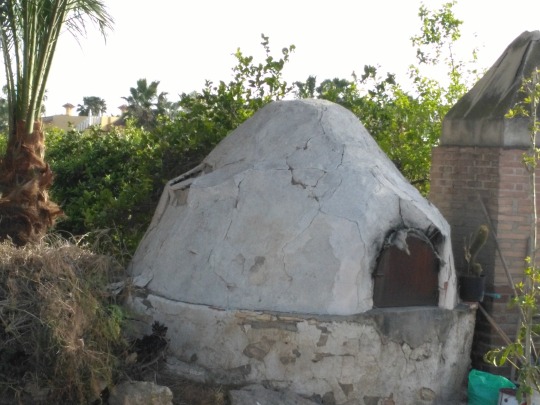This is a guest post by Line Arias, who is a writer at Nonnabox.com. When she is not experimenting with food, she is either planning her next trip or writing poetry.

Pizza is one of those dishes that is enjoyed almost the world over. Decades after the dish was invented there, Italians still love their pizza. On average they eat 7.6 kgs each, per year. Miles behind the Americans who have been consuming commercially cooked pizza since 1905. Surprisingly, each American eats about 13 kg of pizza, per year.
This wonderful food is also very popular in other European countries, but consumption rates are still far lower. Take the Spanish, for example, they consume only about 4.3 kg per head. There are several reasons for this, some are purely cultural others are more tangible and, therefore, easier to understand and explain.
The fact that pizza has a relatively short history in Spain, partly explains why it is not eaten as often as it is in some other countries. This coupled with the fact that the Spanish were, and to some extent, still are, conservative eaters goes a long way towards explaining why not all of them have fallen in love with pizza, yet.
Italian Immigrants Make the First Spanish Pizzas
For decades, the Italians that relocated to Spain have cooked pizza at home. Many Spanish homes, especially those in the country, still have traditional wood-fired bread ovens outside. These traditional ovens are constructed in a very similar way to a pizza oven. So, there is no doubt that early Italian immigrants would have tried to cook pizza in them.
In fact, the owners of the only Italian run pizza restaurant located in Alicante got started by treating their Spanish neighbors to pizzas made in exactly that way. In their case, that was not until the early 70s and they did not open their restaurant until the mid-90s. So, they were not really pizza pioneers, but, in all likelihood earlier Italian immigrants also ate pizza that they cooked in their Spanish wood-fired bread ovens.
The first pizza restaurant opens in Stiges
In most countries, the first pizzerias are opened up in the capital cities. Usually, Italian immigrants who want to recreate a taste of home or commercial pizza chains are the pioneers. Often, the capital city is where new immigrants first set up home, so it is the natural place to give running a pizzeria a try.
Most commercial pizza chains see the capital city as the best place to test the waters, so to speak. They know that capital cities tend to be more cosmopolitan, so the people who live there are usually more open to trying something a little different. However, in Spain, things are often different and that is certainly the case when it comes to the history of pizza, here.
The first pizzeria was actually opened in a small seaside town called Sitges located about 21-miles south-west of Barcelona. For decades, Sitges has been a popular tourist destination with a very mixed population. Currently, there are 4,500 hotel beds available there and around 35% of the town´s permanent residents were born abroad.
Sitges has never really been a traditional Spanish town. So, when Santiago Perez Soler, and his wife Marta, opened a pizza restaurant called Cap De La Vila in the old town it was a success. It was 1966, but the town was already popular with tourists and had more foreign residents than most. They loved the food and the little pizzeria soon became a success.
Family run pizza restaurants start to open across Spain
Gradually, small family run pizza restaurants began to open elsewhere. At first, only in the tourist towns and big cities, but that soon started to change.
By the late 80s, some ordinary Spanish towns had a pizzeria or at least a restaurant that also served pizza. Many bars and restaurants already had wood-fired ovens. So, for them, sliding a pizza in next to the other dishes was not a problem. That is why, even today, in many parts of Spain it is not unusual to be able to buy delicious homemade pizza from your local bar or restaurant.

Spanish Kids Fall in Love With Pizza
In no time, kids started to crowd out these places, on a Friday night. They loved spending a few pesetas on a single slice and a coke and eating it with their friends. For children from the age of 8 upwards this was the highlight of their week, the start of a weekend of fun. For this generation, pizza became a nostalgic food that they loved. A love they have certainly passed on to their children and grandchildren.
Spain´s Pizzas Go Global
Interestingly, quite a few of today´s Spanish pizza franchises and chains started their businesses with just one small restaurant. Spain´s most well-known pizza company, Telepizza, started life in exactly that way. In 1989, Leopoldo Fernández Pujals, a Cuban, opened his first restaurant in Madrid. Today, 1,025 pizza restaurants across the world sell his brand of pizza.
Spanish pizza chefs are growing in confidence and now enter international competitions. With some of them winning, in 2008, a team of Spanish chefs lead by Antonio Martos from Malaga, won the Pizza World Championships that are held every year in Civitavecchia, Italy.
The Future of Pizza in Spain
Once the Spanish people take a food to their heart and make eating it a customary part of their week that is it. Things can only get better.
The little boys who went out every Friday evening to their local pizzeria are now all grown up. Unsurprisingly, given the fact that those evenings out were their first taste of social freedom, they are a little bit in love with this delicious food. For them, eating pizza while socializing with friends is second-nature. Their parents will still won´t touch that ´foreign food´, but for the rest of the population eating pizza is now a Spanish tradition. For the Spanish food traditions are almost a religion, so pizza should remain popular here for many generations to come.
In fact, the way things are going, it is only a matter of time before the Spanish also start offering pizza tours in places like Madrid and Barcelona. You can also bet that somewhere someone is planning to put their town on the map by holding Spain´s first pizza festival. The Spanish love food festivals and tapas trails. New ones are constantly being added to the calendar, so it is only a matter of time before pizza crawls and festivals become part of Spain´s food culture.
–
This is a guest post by Line Arias, who is a writer at Nonnabox.com. When she is not experimenting with food, she is either planning her next trip or writing poetry.

